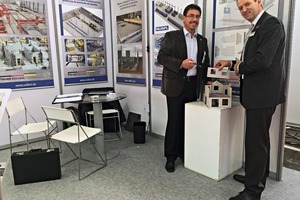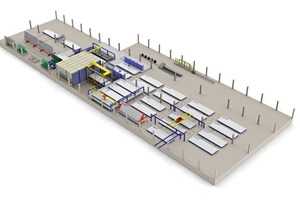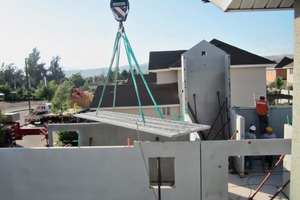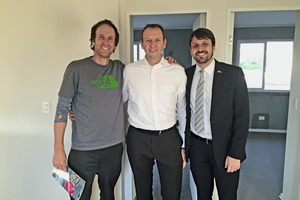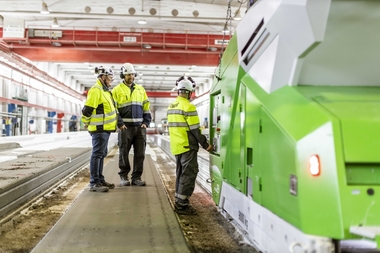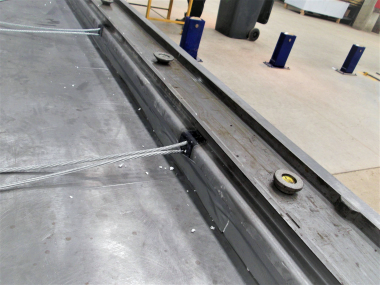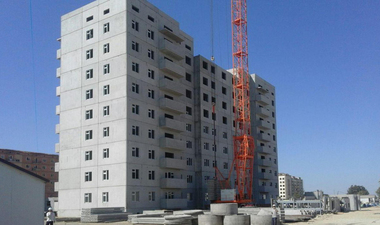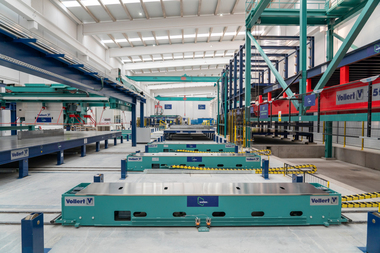Precast concrete building system for residential housing in Chile developed
Efforts to push industrialized building in Chile already existed in the early 1970s. At that time, a collaboration had been agreed between the former Soviet Union and the Chilean government for construction of more than 150 detached houses and 3,500 apartments in the V region (editor’s note: greater Valparaíso in central Chile). Since that initiative, a number of attempts have been made to increase productivity, reduce manual work flows, and improve the quality of buildings.
However, since it was often difficult to raise at the same time all the important factors involved in a construction process – for example, speed, quality, and flexibility – to an equally high standard, a breakthrough was achieved only recently with a building system developed jointly by the Chilean developer BauMax and the southern German plant engineering company Vollert.
Several major challenges
All comparable previous attempts to advance industrialization toward this goal over the past 30 years had not been realized for the most diverse reasons. One of the obstacles has been the investment costs for this kind of automation project that no local company would be likely to afford; as a result, building continued primarily with conventional systems. Although the Chilean construction industry has rapidly developed in recent times, finding qualified labor for implementing new challenges has consequently become increasingly difficult on the other hand.
Not least thanks to the global trend towards full automation of precast production, the time now appears to have come to establish industrialized building systems on the Chilean market as well. Customized solutions and a division into several investment segments enable cost reduction. Toward that objective, additional challenges must be mastered, including assurance of the profitability of the very high production standards. These technologies, moreover, have to be adapted to the special requirements prevailing in Chile – for example, in regard to technical and legal stipulations and, equally important, the dangerous seismic activities in large parts of the country.
Successful Chilean-German collaboration
To implement this industrialized building technology, collaboration agreements were signed between the leading housing developer Manquehue, the general building contractor BauMax, the leading Chilean earthquake consultants Sirve SA, and the German plant engineering company Vollert.
“This strategic alliance made it possible to develop joint solutions for developing and optimizing the new building system,” said Sebastián Lüders, satisfied Technical Director at BauMax. “Throughout the spectrum of our activities – including investigation of various processes, manufacture of prototypes in Germany, and subsequent erection in Chile – much was accomplished with the support of architects, designers, planners, and consultants. As a result, precast, earthquake-resistant concrete walls and floors can now be automatically manufactured at high speed, with top quality, and with great flexibility.”
Series production
to begin shortly
Following successful completion of the first model residential housing project of this kind in greater Santiago, the project is taking on increasingly concrete form. Excavation for the production hall has already begun and installation of the pallet circuit is scheduled to begin in April of 2016, following which series production of the houses will also be possible.
“The hall measures 140 x 40 m and is designed for the manufacture of precast floor plates for floor systems, solid walls, sandwich walls, and double walls – and has a storage capacity for 40 pallets,” proudly reported Philippe Marrié, Proj-ect Manager Marketing with Vollert. “During the first construction stage, 350,000 m² of precast elements can be manufactured annually, and later even 500,000 m² will be feasible in two-shift operation. The initially planned low-cost principle evolved into a patented ”Mediterranean concept” with high quality standards.

